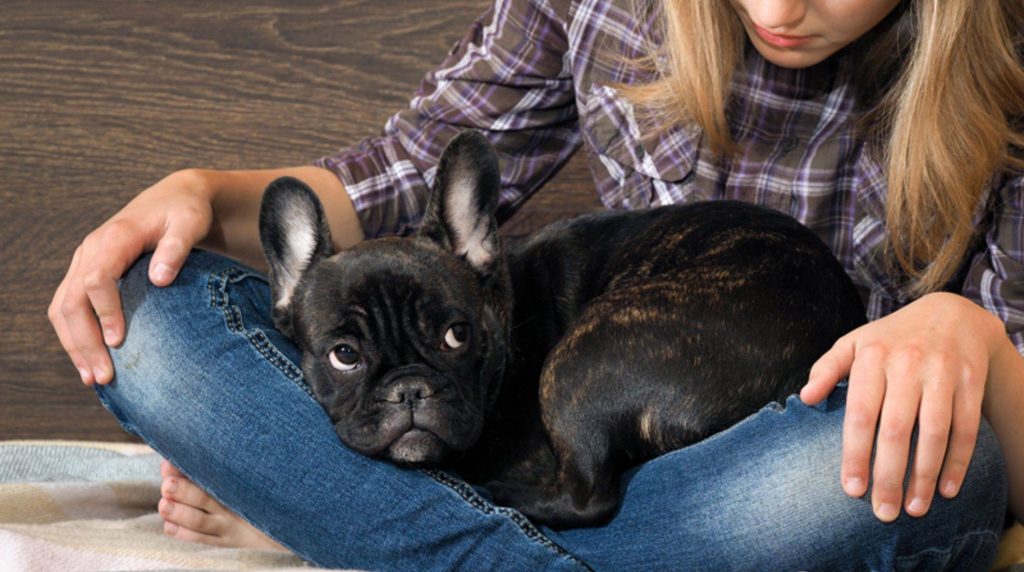Separation anxiety in dogs is a severe psychological problem in four-legged friends. Dogs are initially packed animals, and it is life-threatening for their ancestors and relatives in the wild to be separated from their pack. However, there are gradations from mild anxiety when your pet is all alone to severe panic attacks when you move out of their sight. How can you help your dog if he’s suffering too much from a breakup?

It’s normal if your dog doesn’t like being all alone for long periods. The pack animals first have to learn to be alone, ideally as puppies. Sometimes this doesn’t work so well, or – for example, with animal shelter dogs that have already experienced a lot – the four-legged friend’s essential trust and self-confidence are so damaged that he develops separation anxiety. There are mild cases where he only shows symptoms of restlessness and stress when he is all alone for a long time. However, for more severe cases, you should help him.
Alleviate separation anxiety through activity and relaxation
Mild forms of separation anxiety in dogs can usually be overcome with training. The point is that your four-legged friend perceives being alone as entirely usual and trusts that you will always come back when you walk out the front door. You make the separation easier for your dog if you leave it alone for about 20 minutes before you say goodbye and after you return and don’t pay any further attention to it. This way, he learns that he needs to be able to keep himself busy even when you are around. It also takes the excitement out of your departure and returns. Avoid tearful, dramatic scenes before you walk out the door or come back. Your dog will eventually get used to being alone from time to time is part of his everyday life.
Before and after the resting phase, you can play with your furry friend, go for a walk or cuddle to strengthen the human-dog friendship and help it relax. If your four-legged friend is pleasantly tired after going for a walk, playing, and cuddling, he won’t miss you so much while you’re away, as he then has good reasons to doze off in his basket. To prevent boredom, we recommend intelligence and food games that your household can play independently. Feeding games have the added advantage that you can hide his favorite treats inside – this way, he associates being alone with the joys and loses his fear of them.
Helping Dog With Separation Anxiety: Desensitization
An essential part of the therapy against separation anxiety in dogs is desensitization. Dogs with separation anxiety sometimes become restless when they perceive certain stimuli that herald the departure of their favorite person. The aim of desensitization is that your four-legged friend no longer reacts to stress when he notices these critical stimuli. You have to take away the meaning that your dog assigns to the incentives. Typical motivations can be, for example, that you put on your shoes, put your keys in your pocket, take your coat off the hook and grab your bag. But familiar morning rituals that are part of your daily routine can also give your pet possible clues that you are about to leave them alone.
Desensitization must be done in small steps and requires a lot of patience. Danger! If your dog has severe separation anxiety or if you are unsure, contact a specialist, such as an animal psychologist or a dog trainer trained in behavioral therapy. Mistakes in desensitization can make things worse by causing your dog to lose even more trust. A professional will help you find the right balance and pace for the exercise sessions.
However, with light forms, you can also try it yourself if you dare. Teach your dog that putting on your shoes or jacket, picking up your key, having breakfast, or showering does not necessarily mean it is alone. You can do this by breaking your routine and messing up your habits. As a result, the individual stimuli lose their signal effect. For example, put your keys in your pocket and then sit on the sofa to read. Or put on your shoes and jacket but stay indoors. Also, change the order of your morning rituals, such as showering after breakfast or vice versa. Change just one small thing at a time and see how your dog responds. If your bunch of keys rings and he panics, the first thing you need to do is teach him that the sound doesn’t mean anything.
Is it overcoming separation anxiety through sensory overload?
A unique method of desensitization is “flooding.” You expose your dog to being alone for a few minutes throughout the day and then come back immediately. This sensory overload confuses the anxious expectations of the four-legged friend so that they finally lose their meaning. Going and coming is then nothing special, and your pet understands that there is no need to be afraid of separation. This training requires a lot of finesse, so it is advisable to do it under the supervision of a professional.









